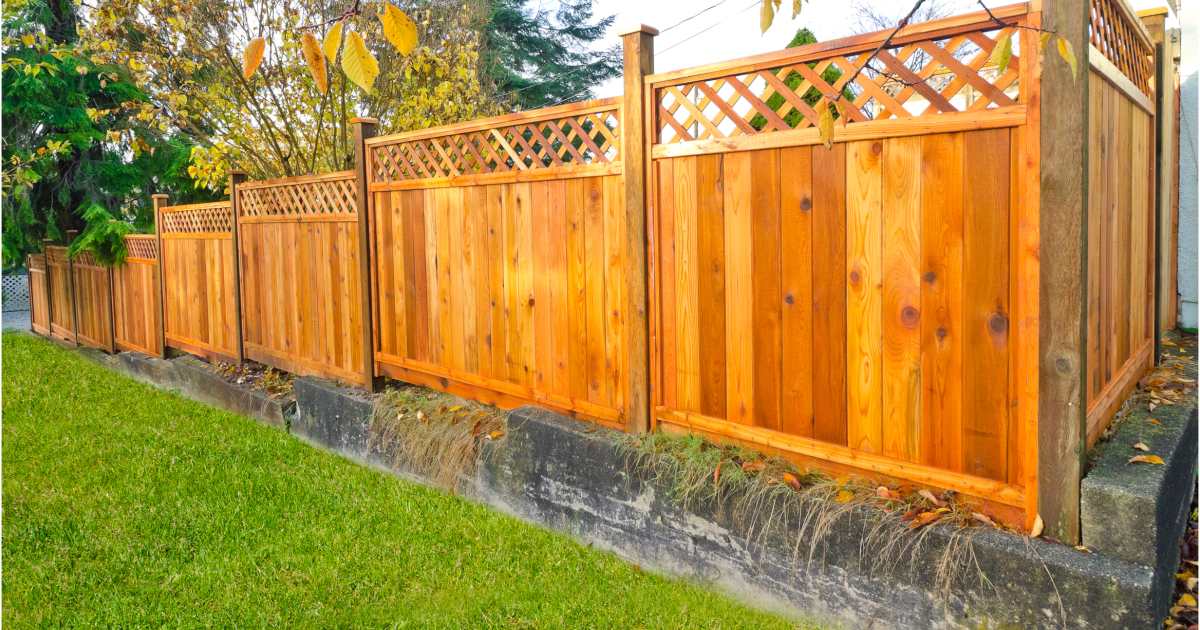All Categories
Featured

Your fence is an essential part of your residential property, providing curb, security, and personal privacy appeal. There are numerous strategies you can implement to protect your fencing and prolong its life.
- Choose the Right Material. The primary step in protecting your fencing from weather-related damage is to pick the appropriate product for your environment. Some materials are much more immune to the components than others.
Wood Fencings: While typical wooden fencings supply an all-natural, eye-catching look, they are specifically vulnerable to water damage, bug, and rot invasion. If you select timber, select pressure-treated lumber or wood kinds that are a lot more immune to dampness, such as cedar or redwood. Vinyl Fencings: Plastic is a low-maintenance choice that withstands fading, fracturing, and bending. It's also unsusceptible to rot and insects, making it optimal for locations with high moisture or direct exposure to rainfall. Metal Fencings: Aluminum and wrought iron fencings are resistant and resilient to weathering. Nonetheless, they can rust if subjected to moisture for extended durations. Go with a powder-coated or galvanized metal fence to lower the threat of rust. Compound Fences: These are made from a blend of timber fibers and plastic, providing the finest of both worlds-- resilience and a natural appearance. Composite fencings are immune to wetness, fading, and decaying, making them excellent for climates with regular rain or snow. 2. Apply Safety Coatings. No matter the material, applying a protective layer can assist protect your fencing from weather condition damage.

Wood Fencings: A good-quality tarnish or sealer can help protect your timber fence from moisture, UV rays, and insects. These coatings create an obstacle that stops water from leaking into the timber and causing rot. You need to use a fresh layer of discolor or sealer every couple of years, depending on your environment and the degree of direct exposure to rain and sunshine. Vinyl Fencings: Although vinyl fencings are typically immune to weathering, they can still experience staining due to the sun's UV rays. You can utilize customized vinyl cleansers or UV protectants to preserve the shade and appearance of your fencing. Metal Fences: For steel fencings, take into consideration applying a rust-resistant primer and a coat of paint made for exterior use. Powder finishing is one more outstanding choice for metal fencings, as it develops a durable, weather-resistant surface that resists corrosion and deterioration. 3. Routine Cleansing and Upkeep. Keeping your fencing routinely is necessary to preventing damage from the components. Dirt, leaves, and other particles can develop up on your fencing, which can cause discoloration, mold and mildew, and mildew in time.
Wooden Fences: Clean your wood fencing every six months with a moderate detergent service or a stress washer (on a reduced setup) to get rid of dirt and crud. Watch out for very early indications of rot, particularly at the base of the fence articles where dampness tends to gather. Vinyl Fencings: Plastic fencings are easy to clean with soap and water. If you discover mold or mildew, use a blend of vinegar and water to carefully scrub the impacted areas. Prevent rough chemicals that could damage the surface area. Metal Fencings: Regularly clean metal fences with a soft cloth or sponge to remove rust-causing particles. For wrought iron fencings, consider applying a rust-inhibiting product to avoid rust. 4. Proper Installation and Positioning. Proper installation of your fence can go a long method in shielding it from weather-related damage. Make sure that your fencing is firmly anchored which blog posts are established deep enough right into the ground to avoid changing during hefty winds or storms. Installing bracing at key factors can give added support. if your fencing is subject to heavy winds.
In addition, take into consideration the positioning of your fence. Plant bushes or trees strategically around your fence to supply some natural protection from extreme winds, extreme sunlight, or driving rainfall if possible. Be mindful not to plant as well close to the fence, as origins can harm or shift messages over time.
- Address Tornado Damage Swiftly. Storms, specifically those with high winds or hail storm, can trigger prompt damages to your fencing. After a storm, evaluate your fence for damaged areas, leaning messages, or dropped debris.
- Winterize Your Fencing. Cold temperature levels and ice can be specifically harming to wooden fences. When water enters the timber and ices up, it can trigger the product to fracture or divide. To avoid this, make certain that the base of your fence articles is elevated and not being in pooled water. In regions that experience freezing temperature levels, you may wish to set up a moisture barrier around the base of the posts to decrease the danger of water damages.
Conclusion. Weather-related damage is an unavoidable component of owning a fence, but with the best precautions and routine upkeep, you can substantially extend the life of your fence. Pick resilient products fit for your environment, apply safety finishes, tidy frequently, and make sure appropriate installation. With these actions, you can secure your fence from the components and preserve its appearance and functionality for several years ahead.
Latest Posts
Find Out Reduce Expenses on Car Maintenance with Montclare Auto Repair’s Limited-Time Deals
Published May 31, 25
1 min read
Explore Special Auto Repair Deals in Chicago at Montclare Auto Repair
Published May 30, 25
1 min read
Discover the Premier Auto Repair Offers in Montclare, Chicago
Published May 25, 25
1 min read
More
Latest Posts
Find Out Reduce Expenses on Car Maintenance with Montclare Auto Repair’s Limited-Time Deals
Published May 31, 25
1 min read
Explore Special Auto Repair Deals in Chicago at Montclare Auto Repair
Published May 30, 25
1 min read
Discover the Premier Auto Repair Offers in Montclare, Chicago
Published May 25, 25
1 min read